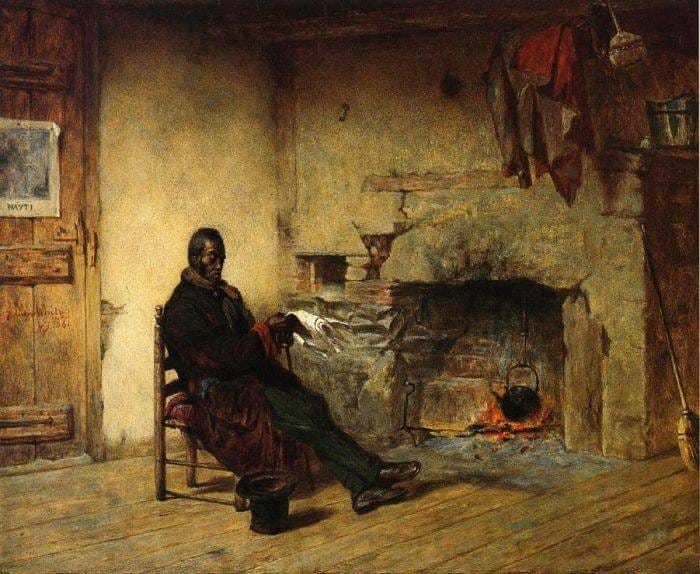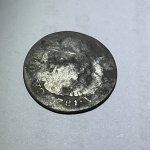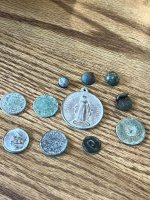I don’t think anyone will ever prove how Samuel Ball made so much money, enough to buy many tracts of land on and off Oak Island. Nobody I’ve heard has mentioned this possibility which to me makes a lot of sense: Samuel Ball knew someone that was a privateer. Could have even been a neighbor living on Oak Island. Ball went out on ocean raids with the privateer and was paid handsomely with the stolen booty. He could never tell the truth about it, so claimed his cabbage growing business was the source.
You are using an out of date browser. It may not display this or other websites correctly.
You should upgrade or use an alternative browser.
You should upgrade or use an alternative browser.
Samuel Ball
- Thread starter supernash
- Start date
Charlie P. (NY)
Gold Member
- Feb 3, 2006
- 13,003
- 17,106
- Detector(s) used
- Minelab Musketeer Advantage Pro w/8" & 10" DD coils/Fisher F75se(Upgraded to LTD2) w/11" DD, 6.5" concentric & 9.5" NEL Sharpshooter DD coils/Sunray FX-1 Probe & F-Point/Black Widows/Rattler headphone
- Primary Interest:
- Metal Detecting
Ball purchased 100 acres in Lunenburg County, as well as Hook Island in 1790. Five years before the "Money Pit" saga begins. He likley had some "loot" from his military career when pillaging was normal and expected. He had his own manservant in 1787 when he still lived in Chester.


 blog.michaeleastwriter.com
blog.michaeleastwriter.com

Samuel Ball
February 2021 Celebrating Black History Matters Samuel Ball Samuel Ball’s story is one of patience, determination, unimaginable courage and heartbreak. His journey to Nova Scotia took him...
www.oakislandtours.ca

The Characters of Oak Island: Samuel Ball — Respected Cabbage Farmer or Something More?
Did a Former Slave Find the Mysterious Treasure That Has Intrigued Treasure Hunters for Over 200 Years?
 blog.michaeleastwriter.com
blog.michaeleastwriter.com
Sam Ball never needed a lot of money to acquire land. After American independence many Planter settlers to NS returned to the States, mainly because the influx of British Loyalists caused a acute escalation of tensions between those British colonials in NS who were patriots to the American cause. OI lots had been abandoned by the time Ball showed up, ca.1783. Any vacant lands could be had if one assumed the taxes owed on them and would farm the land. The owner of lot 18 at this time was Casper Wollenhaupt, a German merchant from Lunenburg who had political connections. Wollenhaupt had a contract to feed the starving natives that had been thrown in "reserves". It is very likely Ball and Smith worked for Wollenhaupt. Smith later acquired lot 18 from him in 1795. This happens to be the date of the fiction about three young men sailing to a secluded island and discovering a block hanging from a tree over a depression. That's clearly not what happened. The area was also very economically depressed since dirt farming was what it was known for when one reads the description of the economic activity of this county. It's not hard to imagine that some with the means could become land rich by slowly amassing lands. In time these lands would become much more valuable. The only suggestion I have ever seen was that Ball was land rich, and that may have all stared with cabbages sold to Germans and to the garrison at Halifax via a mercantile connection he established at OI.I don’t think anyone will ever prove how Samuel Ball made so much money, enough to buy many tracts of land on and off Oak Island. Nobody I’ve heard has mentioned this possibility which to me makes a lot of sense: Samuel Ball knew someone that was a privateer. Could have even been a neighbor living on Oak Island. Ball went out on ocean raids with the privateer and was paid handsomely with the stolen booty. He could never tell the truth about it, so claimed his cabbage growing business was the source.
freeman
Sr. Member
- Apr 5, 2003
- 346
- 665
The invention that Samuel Ball died 'the richest man' in the area is just that, an invention.
It comes only from the writers of The Curse for Oak Island as they were looking for content. for their episodes. When you look his name is not related historically or mentioned in any way with the search known as the Money Pit. The later explosion of articles speculating his riches are those dated from the showing of the episode dealing with him on The Curse of Oak Island.
Here is a typical example of the hype and BS that has resulted and is being promoted now:
"That wouldn’t be so unusual if it wasn’t for the fact that Ball — a cabbage farmer who lived for decades on Oak Island — was one of the richest men in the province."
Which then gets quoted as being an authority:
"....as Rosemary Godin of Nova Scotian news source Saltwire wrote, Ball was one of the richest people in the province by the time of his death in 1846."
Yes, he had land but some was granted in line with other Loyalists who served in the War of Independence.
The rest was picked up over years he was alive but the land on Oak Island was not considered a valuable sea side picturesque land as we would nowadays, it was a island away from town that needed clearing. Likewise the 100 acres he bought on the mainland opposite the island was cleared, denuded land littered with stumps.
You can read his will which is easily found online to see what he had when he died and it amounts to what you would expect of a settler who lived and farmed for a few decades, basically a farmhouse and some land.
The telling part of his involvement with Oak Island is shown by this; he was mentioned in early accounts (Judge de Brisay's account) merely as an item of curiosity being a black man who settled on Oak Island.
What are the names of the white settlers who also lived on the island?
It comes only from the writers of The Curse for Oak Island as they were looking for content. for their episodes. When you look his name is not related historically or mentioned in any way with the search known as the Money Pit. The later explosion of articles speculating his riches are those dated from the showing of the episode dealing with him on The Curse of Oak Island.
Here is a typical example of the hype and BS that has resulted and is being promoted now:
"That wouldn’t be so unusual if it wasn’t for the fact that Ball — a cabbage farmer who lived for decades on Oak Island — was one of the richest men in the province."
Which then gets quoted as being an authority:
"....as Rosemary Godin of Nova Scotian news source Saltwire wrote, Ball was one of the richest people in the province by the time of his death in 1846."
Yes, he had land but some was granted in line with other Loyalists who served in the War of Independence.
The rest was picked up over years he was alive but the land on Oak Island was not considered a valuable sea side picturesque land as we would nowadays, it was a island away from town that needed clearing. Likewise the 100 acres he bought on the mainland opposite the island was cleared, denuded land littered with stumps.
You can read his will which is easily found online to see what he had when he died and it amounts to what you would expect of a settler who lived and farmed for a few decades, basically a farmhouse and some land.
The telling part of his involvement with Oak Island is shown by this; he was mentioned in early accounts (Judge de Brisay's account) merely as an item of curiosity being a black man who settled on Oak Island.
What are the names of the white settlers who also lived on the island?
Last edited:
Top Member Reactions
-
 2605
2605 -
 1182
1182 -
 1077
1077 -
 888
888 -
 862
862 -
 835
835 -
 793
793 -
 675
675 -
 645
645 -
 615
615 -
 497
497 -
 476
476 -
 472
472 -
 472
472 -
 464
464 -
 430
430 -
 403
403 -
O
396
-
 387
387 -
 385
385
Users who are viewing this thread
Total: 2 (members: 0, guests: 2)




